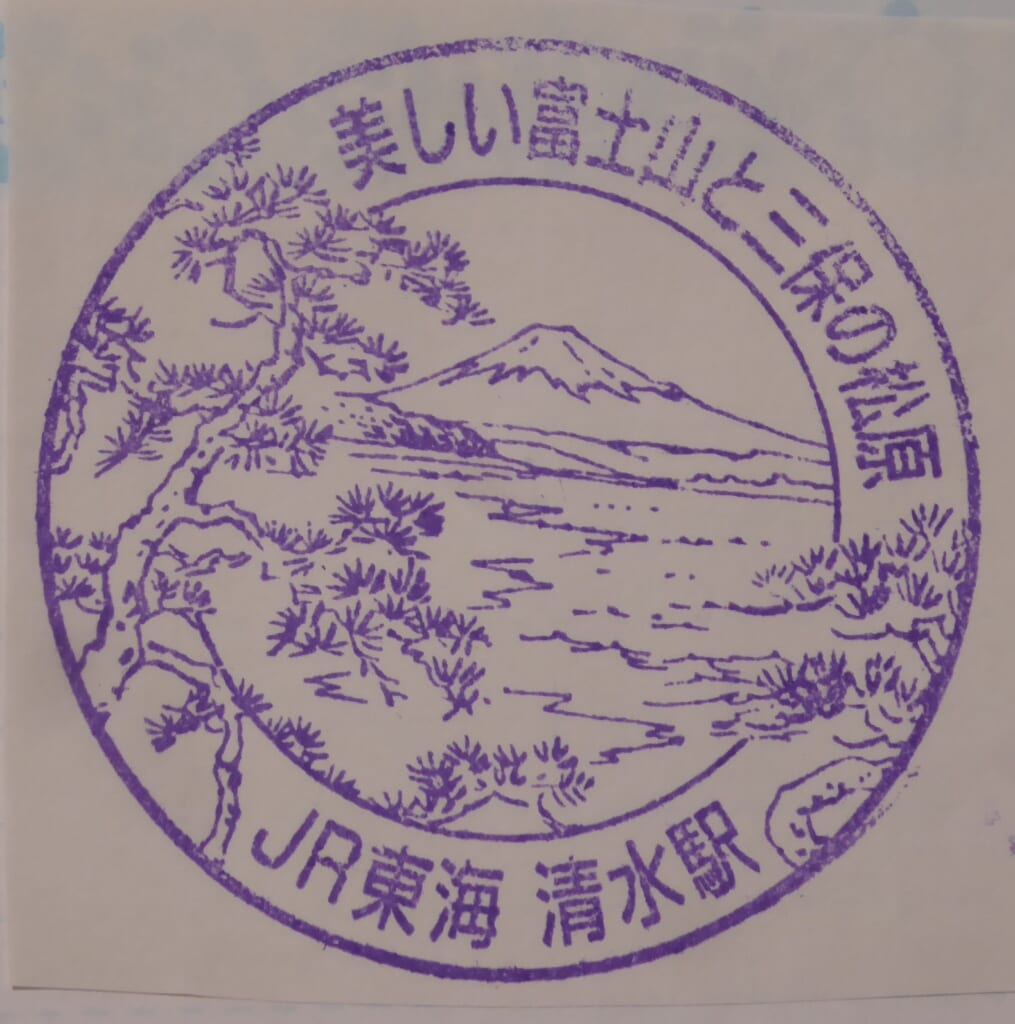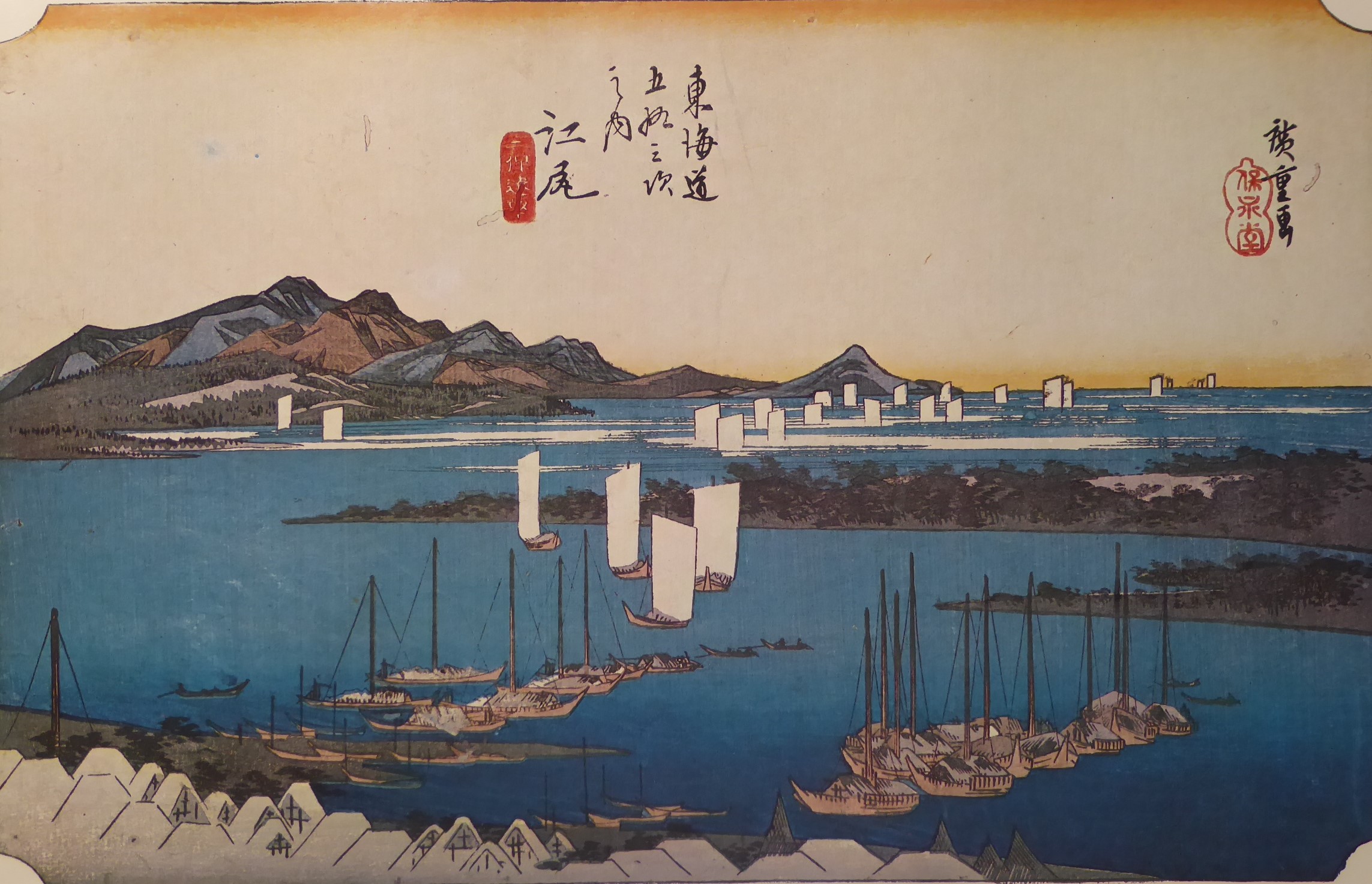Explanation of the Fifty-three Stations of the Tokaido 19 Ejiri
10.6km from Fuchu to Ejiri, 35°01′10.0″N 138°28′56.0″E
Ejiri is the 18th post station on the Fifty-three Stations of the Tokaido.
It is located in the center of Shimizu Ward, Shizuoka City, Shizuoka Prefecture.
The post station has 2 Honnjin, 3 Wakihonjin, 50 lodging houses, 1,340 houses, a population of 6,498, and a streetscape of about 1,420m long.
It is a post station town that developed near the mouth of the Tomoe River, which flows into Suruga Bay.
During the Warring States period before the Edo period, Ejiri Castle was built by Baba Nobuharu, a vassal of the Takeda clan, and it flourished as a castle town.
It is close to Shimizu Port and became a logistics base for Edo during the Edo period.
Shimizu Port is a natural harbor overlooking Orido Bay at the back of Suruga Bay.
Since ancient times, Shimizu Port has developed as a transit point for shipping and a naval base.
In modern times, tea exports began and the area has become an international trading port.
Designated as a specific important port, many companies and factories are located in the Shimizu Port waterfront area, which grew significantly during the period of high economic growth.
It is the hometown of Shimizu S-Pulse, a J-League soccer club.
Miho no Matsubara was registered as a Mount Fuji World Heritage Site in 2013.
About 30,000 pine trees grow along a 7km stretch of coast.
The scenery of the green pine forest, the white waves crashing on the shore, the blue sea and Mount Fuji is depicted in Utagawa Hiroshige’s ukiyo-e and numerous paintings and waka poems.
This is a place associated with Shimizu Jirocho.
Jirocho’s birthplace, family temple (Bain Zenji Temple), and Jirocho’s boathouse “Suehiro” remain.
Shimizu Jirocho (February 14, 1820 – June 12, 1893) was a gangster, gambler, and businessman in the late Edo and Meiji periods.
His real name was Yamamoto Chogoro.
He was the adopted son of a rice wholesaler. When his adopted family fell into ruin, he became a gambler, made a name for himself among the yakuza, and established a territory in Shimizu.
During the Boshin War, he stopped off at Shimizu Port for repairs, where he found the Kanrin Maru, a rebel ship that had been abandoned, and retrieved the bodies of crew members killed by the new government forces from the ship, and gave them a respectful burial.
He became acquainted with Yamaoka Tesshu, a shogunate official who was deeply moved by Jirocho’s sense of chivalry.
To help the former shogunate officials, after the Meiji Restoration, he began cultivating the foothills of Mt. Fuji, and was also active as a social worker.
① “Hoeido version”
A view of Shimizu Port.
Miho no Matsubara can be seen in the center foreground.
The mountain range of Mt. Aitaka can be seen in the distance.
Beyond Mt. Aitaka, the Izu Peninsula should continue, but this has been omitted.
The numerous sailing ships of all sizes make it clear that this is a large port.
② “Gyousyo version”
A morning scene after the snow has stopped.
The subtitle reads “Distant view of Shimizu Port,” but Shimizu Port is not visible.
The Miho no Matsubara pine forest can be seen in the distance.
③ “Reisho version”
A scene from Cape Miho.
A large depiction of Mt. Fuji is depicted in the foreground with a ship with a white sail.
④ “Hokusai version”
This is thought to be a horse trader on his way back from taking a customer to Fuchu.
⑤ “Travel image”
A sign for an event at JR Shimizu Station.
⑥ “Stamp image”
A stamp from JR Shimizu Station.
Hoeido version
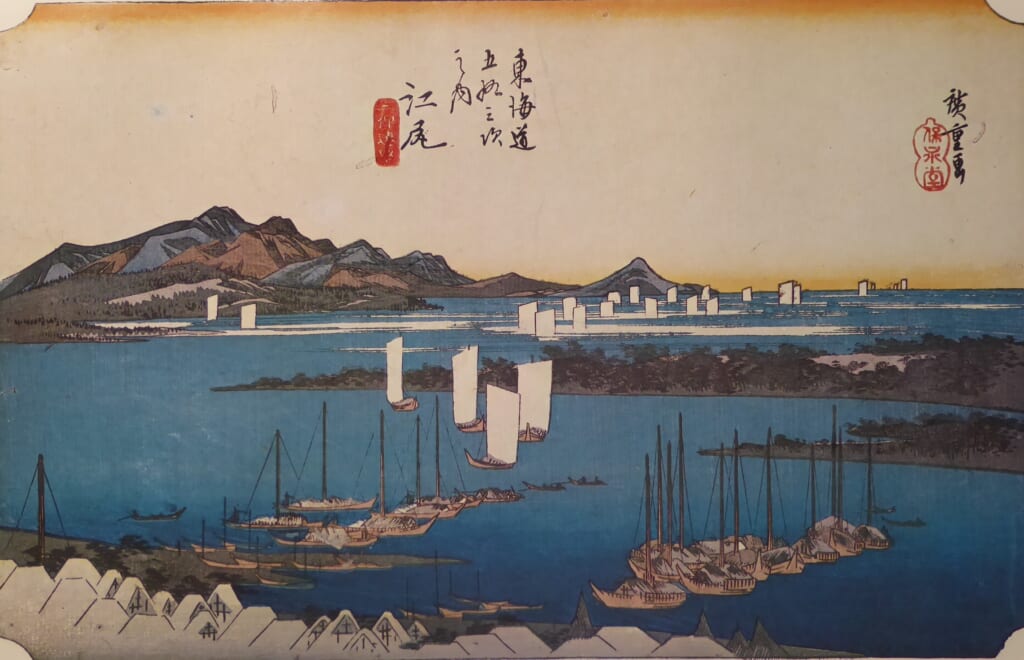
Gyousyo version
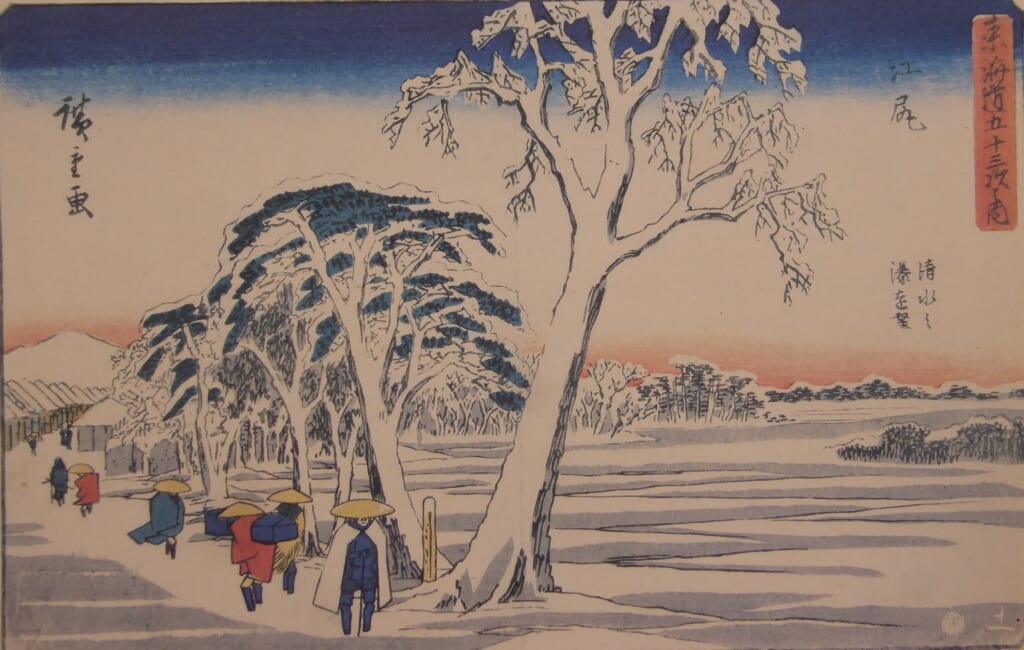
Reisho version
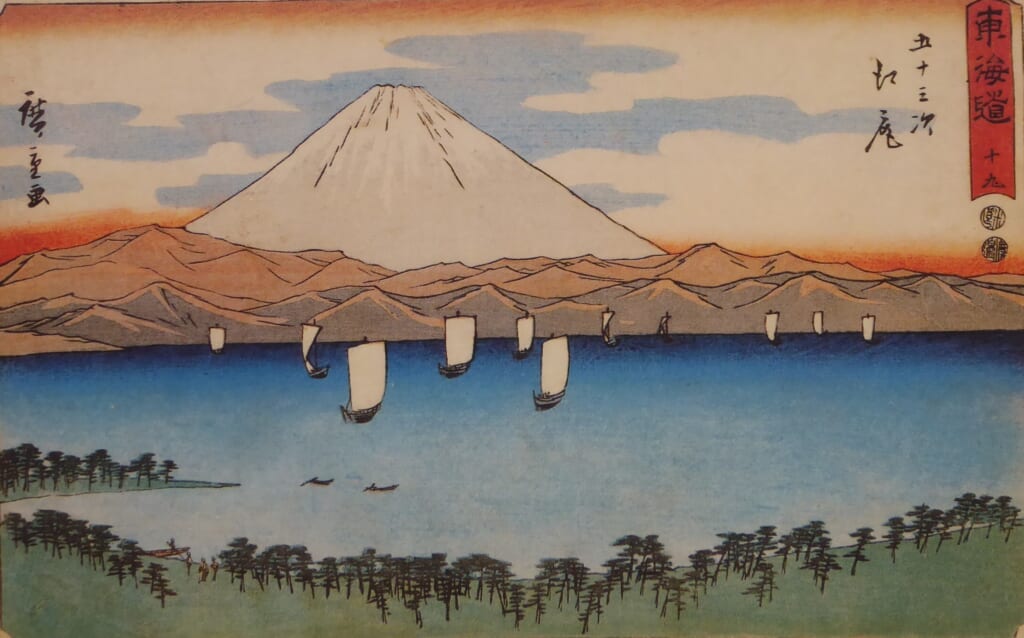
Hokusai version
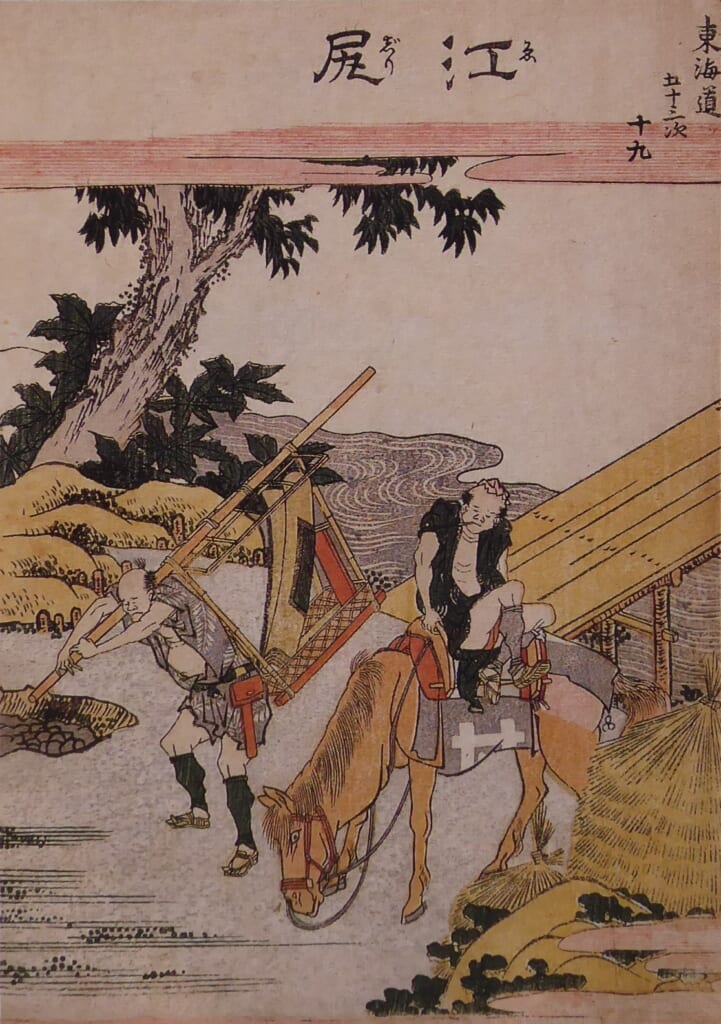
Travel image
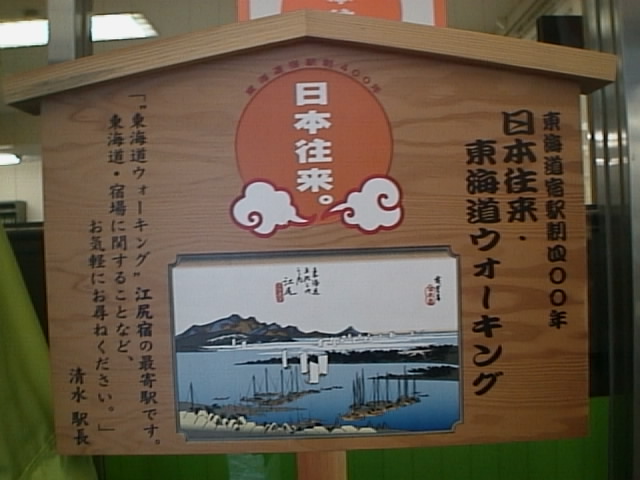
Stamp image
